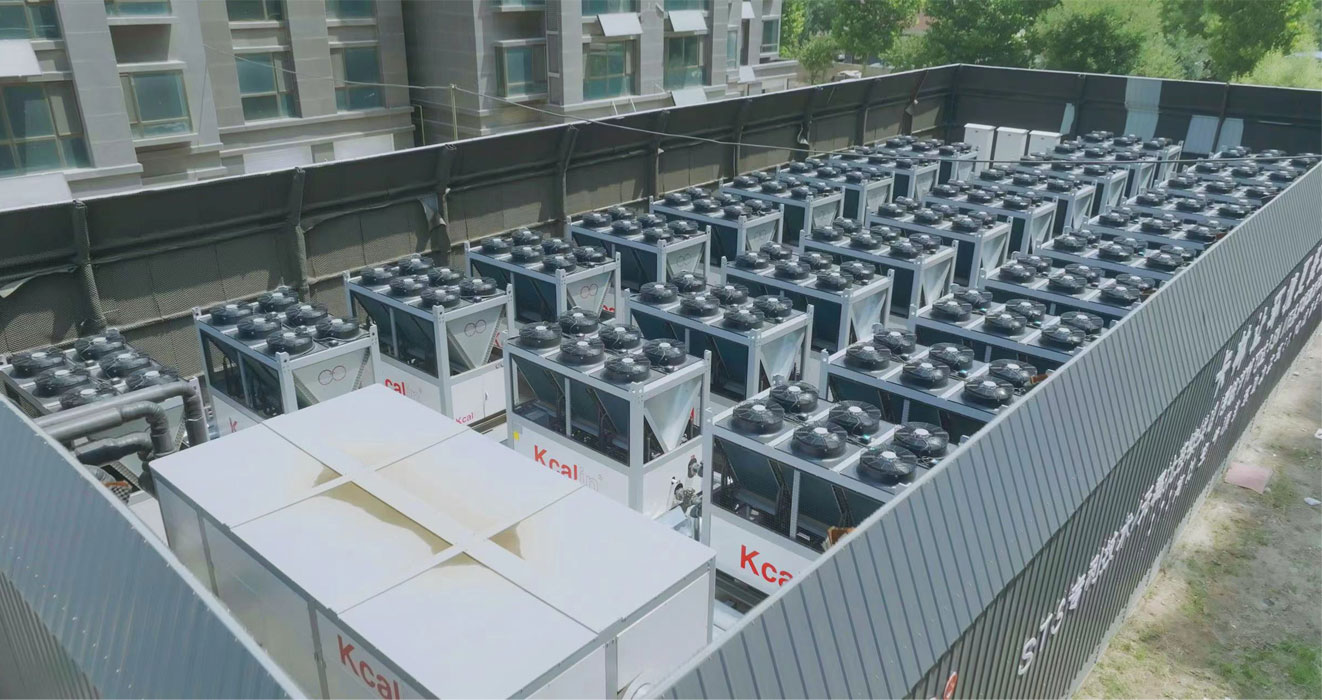Heating in low-temperature environments is a major challenge in people's lives. In this context, air source heat pumps have attracted much attention due to their advantages. It is an environmentally friendly and energy-saving heating method that can extract the heat energy from the low-temperature air outside and convert it into indoor heat, achieving the purpose of heating. However, what challenges will air source heat pumps face in the face of extremely cold conditions? How does it efficiently heat in such an environment?
Let's first gain a deeper understanding of the working principle of air source heat pumps.
Air source heat pumps utilize an important concept in thermodynamic principles - the cycle of refrigerant. When the outdoor temperature is low, the air source heat pump absorbs low-temperature heat from the outside air through an external evaporator, causing the refrigerant to evaporate and become low-pressure steam. Low pressure steam is compressed into high-pressure and high-temperature gas by the compressor, releasing heat. High temperature and high pressure gases enter the indoor heat exchanger, which exchanges heat with the indoor air and releases heat to the room, thereby achieving the heating effect. This process is cyclical and continuously provides thermal energy indoors.

Heating in low-temperature environments is a major challenge in people's lives. In this context, air source heat pumps have attracted much attention due to their advantages. It is an environmentally friendly and energy-saving heating method that can extract the heat energy from the low-temperature air outside and convert it into indoor heat, achieving the purpose of heating. However, what challenges will air source heat pumps face in the face of extremely cold conditions? How does it efficiently heat in such an environment?
Let's first gain a deeper understanding of the working principle of air source heat pumps.
Air source heat pumps utilize an important concept in thermodynamic principles - the cycle of refrigerant. When the outdoor temperature is low, the air source heat pump absorbs low-temperature heat from the outside air through an external evaporator, causing the refrigerant to evaporate and become low-pressure steam. Low pressure steam is compressed into high-pressure and high-temperature gas by the compressor, releasing heat. High temperature and high pressure gases enter the indoor heat exchanger, which exchanges heat with the indoor air and releases heat to the room, thereby achieving the heating effect. This process is cyclical and continuously provides thermal energy indoors.
In addition to technological innovation and product optimization, users can also take some measures to improve heating efficiency when using air source heat pumps. Users can regularly clean and maintain the equipment of the air source heat pump to maintain its good condition and reduce energy loss. Users can choose the appropriate installation location and method when installing air source heat pumps to avoid obstruction and blockage of outdoor units, ensure smooth air circulation, and improve heat absorption efficiency. Users can also take energy-saving measures indoors, such as strengthening insulation, reducing energy consumption, and further improving heating efficiency.
The heating effect of air source heat pumps in low-temperature environments is limited to some extent, but through technological innovation, product optimization, and user measures, air source heat pumps can achieve efficient heating under extremely cold conditions, bringing convenience and comfort to people's lives. With the continuous progress of technology and people's emphasis on environmental protection and energy conservation, it is believed that air source heat pumps will have broader application prospects in the future, creating a better living environment for humanity.







Comment